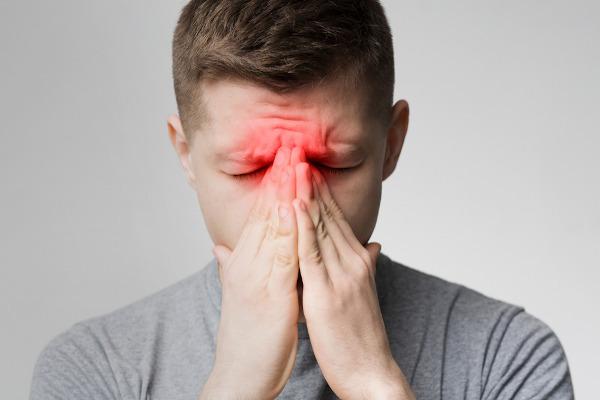Sinusitis is a health problem that affects the mucous membrane of the sinuses, also called paranasal sinuses, triggering symptoms such as headache, pain in the face and feeling of heavy head. Currently the term sinusitis is being replaced by the term rhinosinusitis, as sinusitis is almost always associated with rhinitis.
Among the causes of rhinosinusitis, we can highlight the infections viral and bacterial and the allergic processes. We can classify rhinosinusitis as acute, subacute, chronic, recurrent, and chronic with periods of exacerbation.
Read too: Five common winter illnesses
What is sinusitis or rhinosinusitis?
sinusitis is a inflammation that affects the mucosa of the sinuses, which are air-filled spaces located close to the nasal region. at the moment the term sinusitis has been replaced by rhinosinusitis, because, generally, inflammation of the mucosa of the sinuses is accompanied by inflammation of the mucosa of the nose, known as rhinitis. Rhinosinusitis stands out for having a high prevalence in the population.

Rhinosinusitis can occur as consequence of infection by different agents, such as virus, bacteria and fungi; it may also be associated with allergic processes and anatomical changes that prevent the correct drainage of secretions from the sinuses.
Read more: Diseases caused by bacteria - list, symptoms and treatment
Symptoms of rhinosinusitis
Rhinosinusitis causes symptoms such as headache in the region close to the affected sinus, pressure sensation in this region, and heaviness in the head. The pain region helps to differentiate pain caused by rhinosinusitis from that caused by migraine.
There may also be the production of yellowish, greenish and even bloody secretions. Fever, nasal obstruction, reduction of the smell, cough, tiredness, bad breath, muscle pain and reduced appetite may be present. It is noteworthy that rhinosinusitis can be responsible for complications that affect, for example, the eyeball, the meninges and the bones.
Classification of rhinosinusitis
They can be classified using as criteria the duration of symptoms and the frequency with which the inflammation occurs:
Acute rhinosinusitis: it is the one that has a shorter duration, with symptoms that last for up to four weeks. This type is very much associated with viral infections, such as those that trigger the common cold.
Subacute rhinosinusitis: it has a slightly longer duration than that seen in acute rhinosinusitis, with symptoms that persist for more than four weeks and resolve before 12 weeks.
Chronic rhinosinusitis: the patient has symptoms for more than 12 weeks. Some authors consider this type as a sequel left by a rhinosinusitis caused by bacteria that was not adequately treated.
Recurrent rhinosinusitis: the patient has four or more episodes of acute rhinosinusitis during the year, with complete cure being observed between one condition and another.
Chronic rhinosinusitis with periods of exacerbation: the patient has symptoms that last more than 12 weeks, but they do not occur with the same intensity, there are periods when they are mild and periods when they are intense.
It is noteworthy that when inflammation exceeds the limits of the sinuses and triggers complications, the condition is called complicated rhinosinusitis.
Diagnosis of rhinosinusitis

The diagnosis of rhinosinusitis is based on analysis of signs and symptoms of the patient, being, therefore, basically clinical. Some exams, however, can be requested, such as: a nasal endoscopy, sinus image, and nasal secretion samples, the latter being related to the identification of the causative agent of rhinosinusitis. The recommended professional to carry out this diagnosis is the otolaryngologist.
Read too: Difference between COVID-19, flu and cold
Treatment of rhinosinusitis
is directly associated with the causative agent of inflammation. When we have a viral condition, the treatment will only present the objective relieve symptoms of the patient. In the case of bacterial rhinosinusitis, in turn, the use of antibioticsis recommended. In some situations, the surgical treatment, which has as main objective to drain and restore the aeration of the sinuses.
In general, it is recommended that the patient with rhinosinusitis hydrate well, stay in a humid environment and away from agents that can cause irritation. It is also recommended to washing the nose with a saline solution. According to the Ministry of Health, the saline solution can be prepared at home. The guideline is that “for each liter of boiled water, add a teaspoon (09 grams) of sugar and another of salt”.
By Vanessa Sardinha dos Santos
Biology teacher
Source: Brazil School - https://brasilescola.uol.com.br/o-que-e/biologia/o-que-e-sinusite.htm

